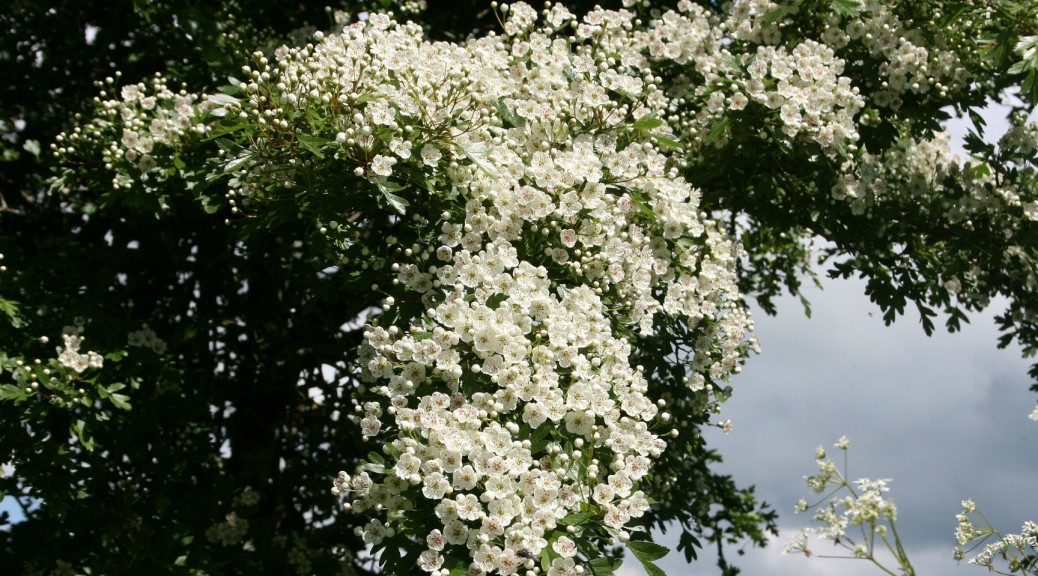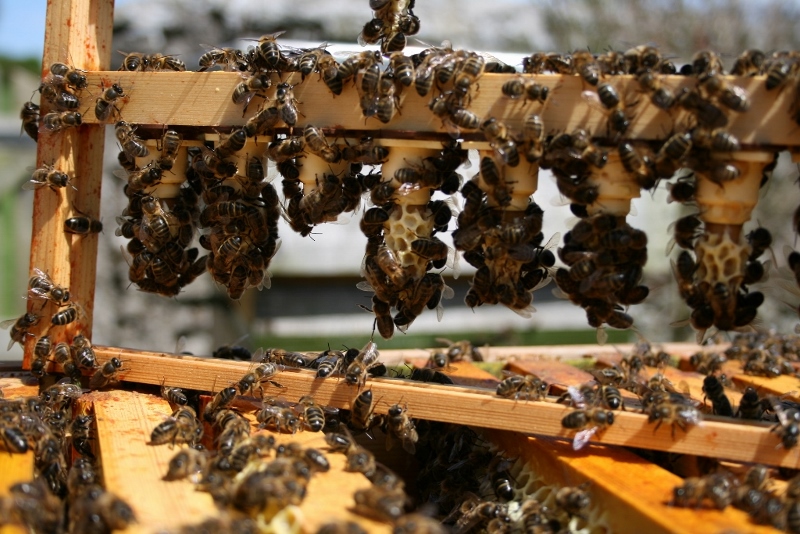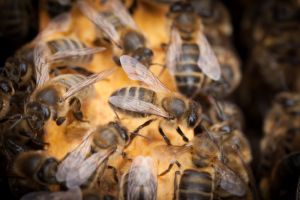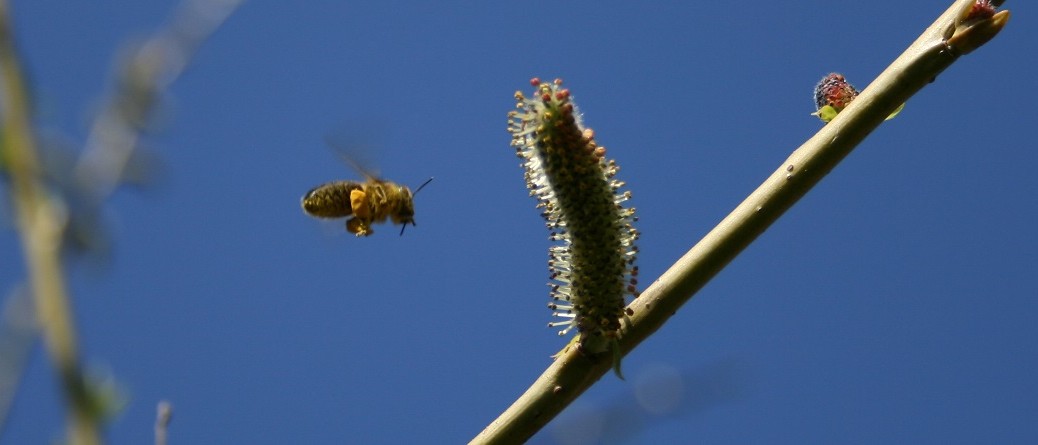The scientific name of the hawthorn is Crataegus monogyna, Crataegus comes from a Greek word meaning ‘strong’ while monogyna means ‘one ovary’ and the resulting single stone in the fruits, or haws, is a distinguishing feature. The hawthorn has many other names including Sceach Gheal, Whitethorn or Quickthorn and May, Maybush or Mayblossom. Continue reading Bee Trees – Hawthorn (Crataegus monogyna)
Carniolan Bee
The Carniolan bee also known as Apis mellifera carnica or A.m.carnica for short has its origins in Eastern Europe and is therefore adapted to a continental climate with cold hard winters and long hot summers. It is now the main bee in Germany.
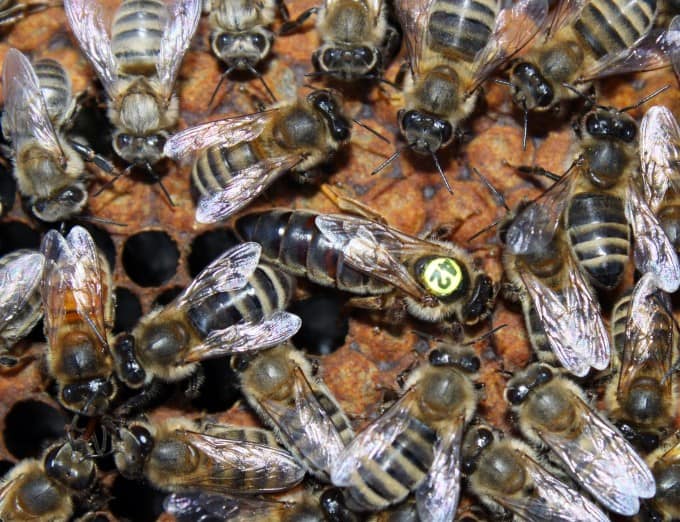
Photo from https://beeinformed.org/2012/04/queen-bee-identification/
It is also known as the Grey bee because 3 segments of its abdomen are broadly covered in a thick pelt of short grey hairs which partially conceals the underlying dark abdomen giving it a frosted look. Photo from queen bee identification article on www.beeinformed.org
It is similar to the Italian bee in that it is a medium sized bee with a long narrow body and limbs and it also has the same long proboscis which enables it to make full use of the red clover – an important forage crop in Europe. Here in Ireland, your bees will have to be quick off the mark if you want to get to the clover before that army of sacred cows known as the ‘Dairy Industry’
Coming, as it does, from a region where summers are predictably long and warm, it has a strong swarming tendency. In its native range, winters are long and cold so it does fares better over winter than the Italian bee, being very thrifty with a smaller brood nest. In spring, the build-up can be very rapid indeed an adaptation to take advantage of an early flow. If there is one…
Like all honey bee subspecies in their pure form, Carniolan bees can have a gentle nature which is good. When matings are mixed, aggression can be expected.
Here in the far west of Europe we have our own native bee, the Irish native honey bee, Apis mellifera mellifera, which has evolved over thousands of years and ‘knows’ how to cope with whatever this clammy, wet and unpredictable Irish climate can throw at it.
If you are thinking of importing Carniolan bees – or buying from somebody else who imports Carniolan or any other bees for that matter – remember that you will be helping to erode the genetics of the Irish bee. Ask yourself – why would you want to do that? Wouldn’t you prefer to be a proper beekeeper? Learn to work with your locals and rear your own queens?
Lots of information on that here : Queen Rearing
And don’t forget – small Hive Beetle is out there waiting for somebody just like you. You don’t want to find yourself in front of god explaining why you destroyed your neighbour’s native bee breeding programme and at the same time introduced the most devastating bee parasite to Ireland now do you?
Best not mention you knew what you were doing.
Click here for more on Small Hive Beetle
Click here for more about the Native Irish Bee
Click here for updated list of Irish Native Honey Bee suppliers
Click here for more about the Italian bee
Click here for the Buckfast bee
Copyright © Beespoke.info, 2014. All Rights Reserved.
Buckfast Bee
The Buckfast Bee is named after Buckfast Abbey in Devon, in England, where it was first bred by famous bee breeder Brother Adam.

Brother Adam (Karl Kehrle 1898-1996) came to Buckfast Abbey from Germany at the age of 12 and began to assist the beekeeper there. In 1916, 30 of the 46 beehives at the Abbey were wiped out by Isle of Wight disease, now recognised as Acarine – a parasitic mite which moves in and occupies the windpipes of bees. Continue reading Buckfast Bee
Italian Bee
The Italian bee – also known as Apis mellifera ligustica or A.m.ligustica for short – is perfectly adapted to the Italian climate and flora and a very glamorous bee altogether.
As you can see from this photo, borrowed from http://beeinformed.org, it is mainly light brown in colour and strikingly striped with dark brown on the abdomen.
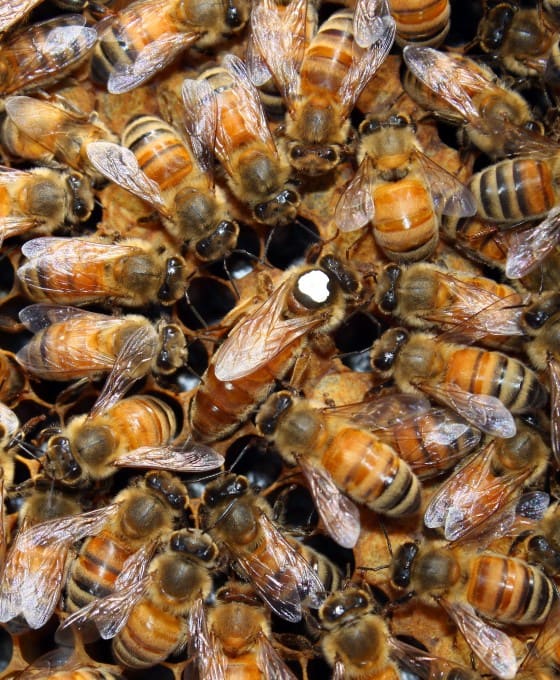
Bee Basics – the Beespace
Reverend Langstroth patented the beespace in America in 1851 and since then he is credited with its discovery.
This is Reverend Langstroth:
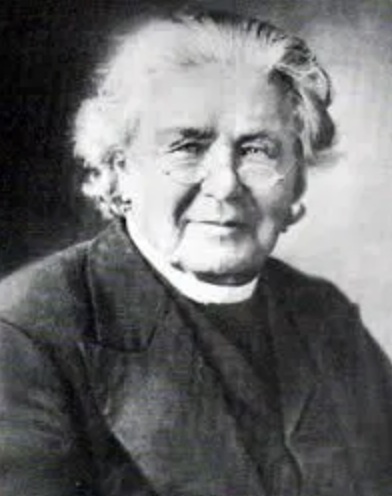
However, it was already in use in Europe by the following two gentlemen – Johann Dzierzon and August von Berlepsch:

But what is the beespace I hear you ask. Well unless you are a Developer you will have heard of Building Regulations and be familiar with the concept of Standard Sizes – for example the standard size for a doorway in a house is 775-800mm wide by 2100mm tall. This allows us humans to move about the place without ducking or turning sideways. Continue reading Bee Basics – the Beespace
Beekeeping for Beginners Course 2014
St Brigid of Kildare
February 1st is the Feast Day of St Brigid (AD450-525) female patron saint of Ireland.
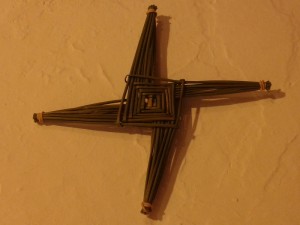
For us Celts it is also the first day of Spring.
You Saxon dogs will have to wait till March 20th!
Irish Native Bee
The Irish native bee has the Latin name Apis mellifera mellifera or A.m.m for short. It is also known as the Dark bee.
How to recognise the Irish bee…
…these are some of my native Irish bees. Click the photo for a better view.
Here are some of the characteristics to watch out for when selecting breeding stocks: Continue reading Irish Native Bee
Burns Night Special
Brighten up your Burns night supper with some Scottish Flummery. Not an adjective but a noun!
According to Chambers Twentieth Century Dictionary of 1901 Flummery is an ‘acid jelly made from the husks of oats’ and water but it has since come to mean ‘an empty compliment or anything insipid’. A recipe for traditional Flummery seems to bear this out, with its description of a rather flaccid, glutinous dish, resembling porridge but with the oats carefully removed. Continue reading Burns Night Special
Bee Trees – Willow (Salix spp)
Willows (Salix spp.) bloom early in the year – February or March – and are very important and popular with the bees which can be seen thudding onto the landing board bearing very large loads of powder-yellow pollen. In an exceptionally warm spring the bees may even bring in a small crop of honey but this is very rare.
They are a complex group of many species ranging from ground hugging mountain shrubs, to graceful riverside trees. Despite their diversity of form and habitat, willows are often to be found in wet, boggy places or close to water. Continue reading Bee Trees – Willow (Salix spp)
